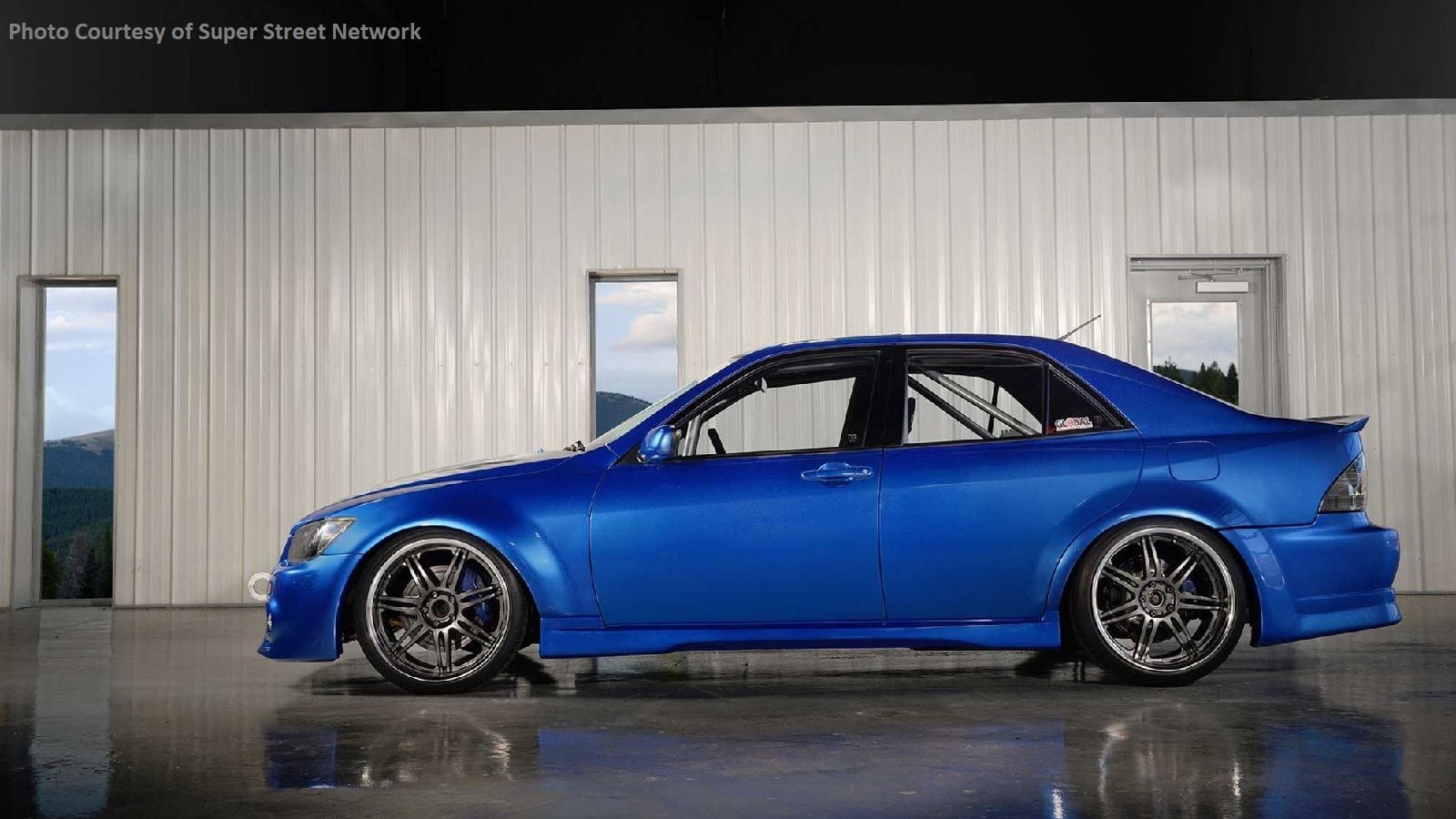Daily Slideshow: Reasons Why 1st Gen IS is Better Than the E46 BMW and W203 Mercedes
Enthusiasts would often gravitate towards the E46 BMW 3 Series or Mercedes W203 C-Class in the early 2000's, but the IS300 was a capable and reliable car that matched up quite well with its German counterparts. In many respects, the IS300 turned out to be the best car of the three.












The Rising Sun
The "Sport Sedan" car classification is considered to be a loosely defined category that often sees regular old family sedans with various "Sporty" improvements to make them a bit more aggressive, hard-edged, and simply much more fun to drive. At the start of the new millennium, the BMW 3-Series (E46) was considered the gold standard of sport sedans followed closely by the new W203 Mercedes-Benz C-Class models. These cars sold like hotcakes likely because they combined the elements of comfort and luxury in a fairly lightweight, responsive, rear-wheel-drive platform that was capable of taking the kids to school and carving the canyon backroads all in the same day. Although the established German car brands received much praise, the Lexus IS300, a newcomer from Japanese manufacturer Toyota-Lexus, had a huge impact on the Sport Sedan scene that can still be felt today.
A Target In Sight
The first generation Lexus IS300 was introduced to the US market for the 2000 model year. The car was based on the Japanese market Toyota Altezza that was engineered by Nabuaki Katayama. Yes, the same Nabuaki Katayama that not only developed the legendary Toyota Supra and AE86 platforms but also worked in Toyota's motorsports division that participated in various racing series including the World Rally Championship and Le Mans. From the get-go, the IS300 was developed as a direct competitor of the top-dog BMW 3-Series as Katayama wanted a front-engined, rear-wheel drive layout with sport suspension off of the larger GS sport sedan vehicles. Additionally, he wanted the car to also be capable of easily accepting modifications to enhance performance down the road. The Toyota Altezza won the 1998-1999 Japanese Car of The Year award with its smaller 2.0L engine, but by the time it hit the US shores as the Lexus IS300, it was ready to fight with the big boys with its 3.0L 2JZ Supra-derived straight-six.
Sensational Styling
When it came to styling, many considered the IS300 to be towards the top of the list in the looks department. To the untrained eye, the E46 BMW looked strikingly similar to the previous E36 that was developed 10 years earlier, thus the car looked a bit aged next to the IS300 and W203 Mercedes. The C-Class Benz was a striking new design with its elegant curves but always felt more like an executive car as opposed to something sporty because it looked significantly larger than its competitors. The IS300's styling was fresh as it featured a sloping hood leading into a small front fascia as well as roofline that sharply met the visually compact trunk. Perhaps one of the most important styling features of the IS300 are the "Altezza" clear lens taillights that spawned an entirely new light design that is still used on various vehicles today. The interior layout ergonomics and materials are quite similar between all three cars, but the sleek chronometer gauges, drilled-aluminum pedal set, and a chromed-ball shift knob are stylish touches that make the IS300 feel like a more sport-oriented car.
Razor-Sharp Handling
The E46 had received top marks for handling upon its introduction in 1998 and was said to have the best ride quality and turn-in of any sport sedan at the time. The C-Class Mercedes; however, was quite the opposite as many complained of poor steering feel, excessive steering effort, and a cushy ride that was not well suited for spirited driving sessions. Experts agree that the IS300 could stand toe to toe with the Bimmer in the handling department. In their 2001 Sport Sedan comparison test, Car & Driver rated the turn-in of the IS300 as the best in its class and it nearly equaled the BMW on the skid-pad at .82g. The IS300 is playful in the twisties and has stable understeer engineered into it when pushed to the limit. That said, uprated swaybars and a set of coilovers can drastically improve the already good handling of the Lexus.
Well-Rounded Performance
When looking across the board at performance specs between the three cars, the IS300 stacks up quite well. The top speed is kinda a moot point on all cars as they are speed limited from the factory, but the IS300 tops the group at 144 mph. That said, removal of the limiters will see the BMW eek out about an 8-10 mph speed advantage over the Lexus. The 2JZ engine in the Lexus is good for 217 horsepower and 218 lb-ft of torque and was considered very responsive in driving tests, especially when compared to the Mercedes, but still lacked the punch and outright acceleration of the BMW 330i. The brakes on the IS300 were significantly better than the others in magazine braking tests with great pedal feel and shorter stopping distances. Overall, the IS300 puts up a good fight against BMW and only loses out by a few tenths in the quarter mile to the quicker, but keep in mind that the Lexus' 3.0L straight-six is ripe for modding.
First-Rate Reliability
Perhaps the most important comparison category between the Lexus, BMW, and Mercedes is their overall reliability and cost of ownership. With early models of these cars approaching the 20-year old mark, we've been able to see the common weak points in each as well as the cost of maintenance to keep them on the road. The IS300 is the clear winner here as it has proven to be a relatively bulletproof design. The biggest area of concern is maintenance on the engine timing belt that should be replaced at a 90k mile interval. While in there, it is recommended that the water pump is replaced as preventative maintenance. The BMW has its share of problems and upkeep is significantly more expensive. The E46 has been notorious for cooling system failures, rear spring failures, worn flex disc/differential pinion damage, and the rear subframe failure that causes it to separate from the chassis. The W203 Mercedes regularly eat front-end bushings causing clunky suspension and the SAM electrical module commonly fails begetting a host of electrical issues. The Lexus IS300 has shown typical Japanese reliability with some cars out there having 250K+ miles. Having such good dependability coupled with its respectable performance and great looks, most consider the IS300 a no-brainer when cross-shopping between a used Mercedes or BMW.
To keep your Lexus on the road and running right check out the How-to section of ClubLexus.
